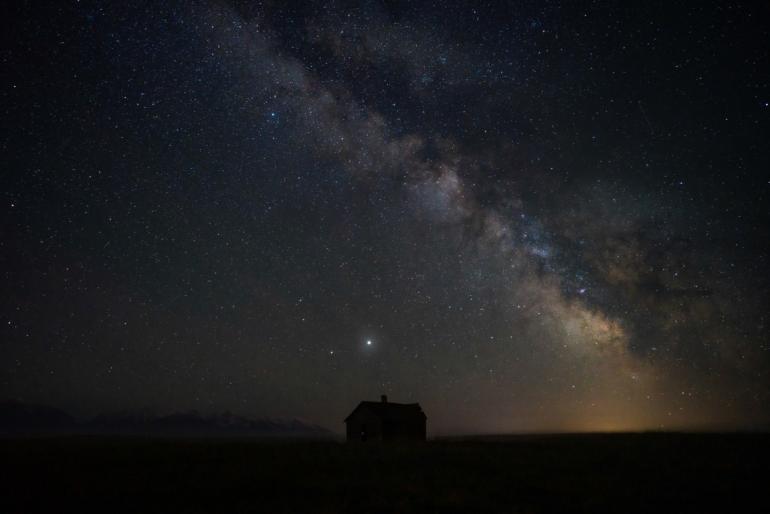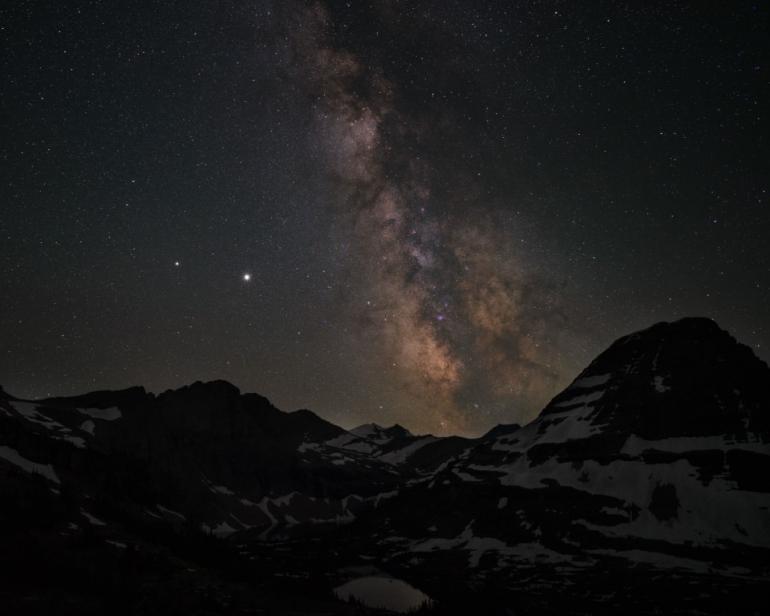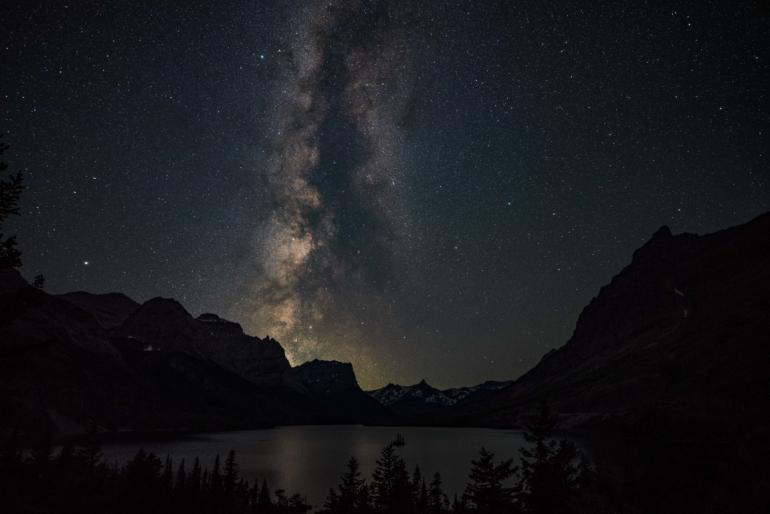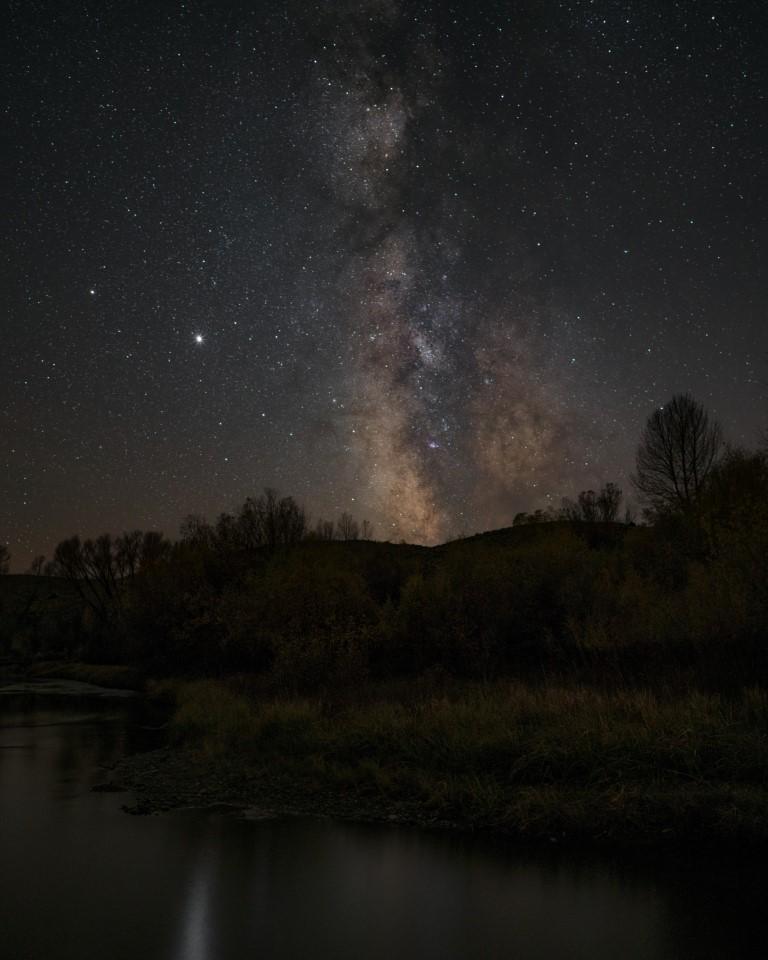The Return of the Galactic Core: How to Get Great Star Field Photographs in Montana

This photo was taken around midnight in the middle of May.
Notice the arch of the Milky Way to the east.
Yes, the title does sound a little like a science fiction novel, doesn’t it - but it’s not. As most people learn early in school, our solar system is located in a spiral arm near the outer edge of our galaxy. When we look up in the night sky and see the Milky Way, we are looking at the disk of our galaxy edge-on. We can either be looking out along the spiral arm to the outer edge of our galaxy, or we could be looking in, toward the center.
Some part of the Milky Way is visible all year round, but for part of the year, all we can see is that outer edge. This part of the Milky Way is beautiful in its own right, but when we can see the direction, towards the inner core of the galaxy, where the densest concentration of stars are, then it becomes spectacular!
Unfortunately, the Core is not visible all year. As the Earth moves around the Sun throughout the year, our night sky is only pointed towards the Core for part of the year. For the balance of the year, the Core is invisible, hidden behind the light of our daytime skies. Exactly when, for how long, and how high the Core can be seen depends on latitude.
For Montana latitudes, March through September are the best months to view the Core. As it makes its dance through the night sky during this time, the maximum elevation it reaches above the horizon is only about 15 degrees.
Further south, it appears for longer and rises higher in the sky. That’s one reason many photographs of the Milky Way are taken in the Southwest US.
Regardless of where you are and how much of the Galactic Core you can see, this time of year is often referred to by photographers as the “Milky Way Season.”

Taken in the third week of July, at around 1 am. Notice there is still a slight “lean” to the east of Milky Way.
Another factor that affects photographing the Milky Way is the moon. When full, the light from the moon washes out much of the starlight, the Milky Way included. Practically speaking, a rough rule of thumb is to target the five days on either side of the New Moon. Even though there is a crescent moon then, it either sets soon after the Sun (waxing) or a little before sunrise (waning). That leaves plenty of dark night to photograph the stars.
Finally, it goes without saying that one needs clear or reasonable clear skies. To catch a New Moon during those early months (March and April) can sometimes be tough in Montana, especially on the west side.
Even though this is often a cloudy time of year, it’s good to be ready in case luck breaks your way and a clear, high-pressure system moves in. The clear skies of our Desert Southwest are another important reason many photographers make the trek south.When the Galactic Core first appears in Spring, it can usually be seen rising a couple of hours before dawn. It first appears as an arc, starting in the south and arching back to the east.

Also taken in the third week of July at about 4 am. Notice how in 3 hours, the Milky Way is now leaning to the west.
Although one cannot see it due to the rising Sun, as the Earth turns, the Milky Way would appear to move across the southern horizon and soon is pointing straight up, and then, later, to the west. As summer comes, the constellations appear to move forward in time, rising earlier with each month. However, so does the Sun, and the days get longer, too. The rising of the Milky Way as an arc is now obscured by the earlier sunrises and, for most of the summer, appears almost straight up and down.
This can affect the compositions of night photos that include the Galactic Core, as does what lens you might use on your camera. Most photographers like to use very wide-angle lenses to capture as much of the sky as possible. Without a wide-angle lens, it is more difficult to make a good stretch of the Milky Way the subject of the photo. Simply put – there would not be enough sky.
Photographing the night sky can be a lot of fun, and it doesn’t have to involve a lot of high-end camera gear. The first time I took a night sky photo and saw all the stars “pop” on the back screen of my camera, I was hooked! Give it a try – you may fall in love with it, too. But don’t wait too long – you might miss out on the “Milky Way season”!

This photo was taken in the first week of October. Now the core is disappearing below the horizon.
Leave a Comment Here